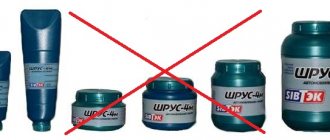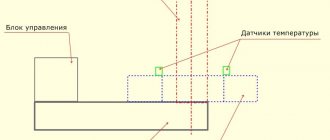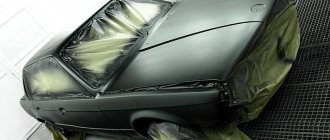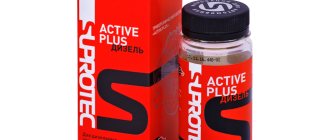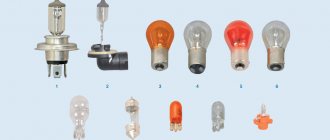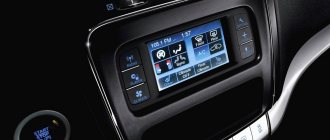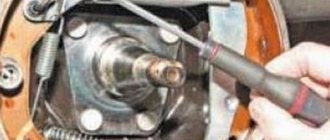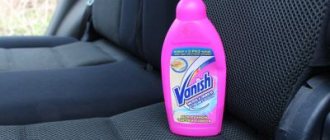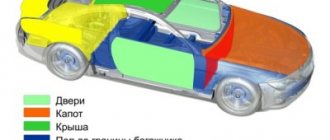Bearings are widely used in various industrial equipment, machinery, cars and trucks, sports equipment, etc. They became widespread due to the simplicity of the device and low cost.
During operation, these components are exposed to various loads, speeds, high and low temperatures. Without proper maintenance, they quickly fail. Special lubricants can reduce their wear, protect them from temperature effects, corrosion and other factors that negatively affect their performance and reliability.
Let's compare the most well-known bearing lubricants and choose the best one.
TOP 5 greases for bearings
EFELE MG-211
1
place
EFELE MG-211
0
/100
RATING
0
100
EFELE MG-211 is an extreme pressure lithium grease designed for components operating under high loads. Operating temperature range from -30 to +120 °C.
The material is widely used in friction units of the chassis of lifting and transport machines and automobiles, in bearings of fans, electric motors, metalworking machines, and mechanisms of general industrial equipment. Also suitable for friction units in conveyor systems, machines and installations in the cement, steel and mining industries.
In addition to bearings, the lubricant can be used in guides, gears, splined joints and flexible shafts in shells.
EFELE MG-211 has increased load-bearing capacity, high anti-corrosion and anti-wear properties. The material is resistant to water washout and has good colloidal stability as well as a long service life. Can perform the function of anti-emergency lubricant.
Molykote Multilub
2
place
Molykote Multilub
0
/100
RATING
0
100
Molykote Multilub is a lithium grease for long-term lubrication. Operating temperature range from -25 to +120 °C.
The material is intended for friction units of the chassis of lifting and transport machines and automobiles, bearings of electric motors and fans, spindle bearings, ball screws, guides of metalworking machines.
Can be used in friction units of conveyor systems, various open and closed gears, splined joints and flexible shafts in shells.
The lubricant works in damp environments and is resistant to water washout. It has increased load-bearing capacity, anti-corrosion and anti-wear properties, as well as emergency lubrication properties and a long service life.
Mobilux EP 2
3
place
Mobilux EP 2
0
/100
RATING
0
100
Mobilux EP 2 is a lithium grease for equipment components operating in harsh conditions. Operating temperature range from -20 to + 130 °C.
The lubricant is used in components and mechanisms of automotive vehicles and industrial equipment. In particular, it is used to service bearings and bushings that operate under increased loads, high speeds, and shock loads.
The material has anti-corrosion and anti-wear properties, is not washed out by water and is resistant to its long-term exposure. It has a long service life and can be used in centralized lubrication systems.
Renolit EP 2
4
place
Renolit EP 2
0
/100
RATING
0
100
Renolit EP 2 is a multi-purpose lithium grease with extreme pressure and anti-wear additives. Operating temperature range from -25 to +130 °C.
The material is used in components of cars and trucks, special equipment, and industrial equipment. Can be used in gearboxes, centralized lubrication systems and as a universal lubricant.
Renolit EP 2 is resistant to water, can withstand increased loads, and has anti-scuff and anti-corrosion properties.
Shell Gadus S2 V100 2
5
place
Shell Gadus S2 V100 2
0
/100
RATING
0
100
Shell Gadus S2 V100 2 is a multi-purpose lithium grease. Operating temperature range up to +130 °C. The manufacturer does not indicate the lower limit.
The material is used in bearings of electric motors, water pumps, sealed bearings, lubricated once for their entire service life. Suitable for general industrial use, centralized lubrication systems and some lightly loaded components.
The lubricant has oxidative and mechanical stability, anti-corrosion properties and a long shelf life.
What lubricant should not be used?
Of course, not all lubricants are suitable for this application:
- grease, although it is a grease, will not protect the bearing at low or high temperatures;
- graphite lubricants have an abrasive effect and are not suitable for ball bearings;
- lubricants with a silicone or petroleum jelly base lose their lubricating properties even at 60°C, leaving the ball bearings unprotected;
- CV joint-4 is a controversial option. Still, this composition is designed for rougher use;
- compounds containing only a hydrocarbon lubricant base with a small proportion of additives. They are designed rather for preservation of mechanisms, passive protection, rather than high load.
Why are bearings needed?
Bearings are units that are part of the supports of rotating shafts and axles. They take axial and radial loads that are applied to an axle or shaft and transfer them to other parts of the structure, such as the body or frame. They must also ensure movement with minimal loss and keep the shaft in space. The efficiency, service life and performance of this or that equipment depend on the quality of the bearing.
There are two large groups of bearings based on the type of friction. These are rolling and sliding units. Magnetic bearings are a separate group.
Plain bearings
Sliding bearings are a housing with a hole into which a sleeve is pressed. The most common design consists of a split body and an insert, most often made of non-ferrous metal. The gap between the bearing sleeve hole and the shaft allows the shaft to rotate freely.
Depending on the operating conditions, the peripheral speed of the axle and the design, the following types of friction are distinguished: liquid, boundary, dry and gas-dynamic. In bearings where friction is liquid, at the moment of start-up there is a boundary stage.
Lubricant is one of the main conditions for reliable operation of a bearing. It provides separation of moving parts, low friction, removes heat and protects against aggressive external influences. There are liquid, plastic, solid and gaseous lubricants.
The highest performance properties are observed in porous self-lubricating bearings, which are manufactured using powder metallurgy. During operation, they heat up and release lubricant from the pores. This is how the lubricant gets onto the working surfaces. At rest, it is absorbed back.
Sliding bearings can be divided according to the shape of the bearing hole (single- or multi-surface, with or without offset of surfaces, with or without a center offset), by the direction of load perception (angular contact, axial, radial), by design (built-in, detachable, one-piece) , according to the number of oilers (with one or more valves), adjustable and unregulated.
The advantages of plain bearings include:
- Simple design
- Economical with large shaft diameters
- Ability to withstand high vibration and shock loads
- Reliability in drives operating at high speeds
- Possibility of adjusting the gap
- Possibility of installing split bearings on crankshaft journals
Disadvantages include reduced efficiency, high requirements for lubricant purity and temperature, uneven wear of the journal and bearing, high lubricant consumption, high friction losses during start-up, and relatively large axial dimensions.
Grease composition
Most lubricating greases consist of a metal soap thickener and a mineral base oil. Additionally, additives are added to them. They influence properties such as wear protection, corrosion protection or aging resistance. However, such additive packages are not effective over the entire temperature and load range.
The resistance of greases to environmental factors such as temperature and humidity varies significantly.
The compatibility of lubricants should be carefully checked:
- between themselves;
- with anti-corrosion agents;
- with thermoplastics, thermosets and elastomers;
- with light alloys and non-ferrous metals;
- with coatings;
- with paints and varnishes;
- from an environmental point of view.
When assessing environmental friendliness, toxicity, biodegradability and water hazard class should be taken into account, among other things.
Rolling bearings
Rolling bearings operate primarily under rolling friction conditions. They consist of 2 rings, rolling bodies, a separator, which separates the rolling bodies from each other, keeps them at the same distance and directs their movement. Outside the inner ring and inside the outer ring there are grooves along which the rolling elements move.
In order to reduce dimensions, as well as to increase rigidity and accuracy, combined supports are used in some equipment units. They are grooves that are made directly on the surface of the housing part or on the shaft.
Some types of rolling bearings are produced without a cage. They contain a large number of rolling elements and have a higher load capacity. The negative side of the absence of a separator is the reduction in maximum rotation speeds due to increased torques of resistance to rotation.
Rolling bearings can be ball (radial, spherical, thrust, angular contact, radial for housing units), roller bearings with cylindrical (radial, thrust), conical (angular contact, thrust), spherical rollers (radial self-aligning, thrust self-aligning), with needle rollers (thrust, radial, combined), radial toroidal, radial with twisted rollers, combined, roller and ball support, rotary support devices.
Compared to plain bearings, rolling units have the following advantages:
- Less friction losses
- Higher efficiency
- The friction moment at start-up is 10-20 times less
- Easy to maintain and replace
- Less lubricant consumption
- Low cost
- Ease of equipment repair
- Saving non-ferrous metals needed in the production of plain bearings
The disadvantages of rolling bearings include the complexity of installation and assembly of units, noise during operation, unsuitability for operation under high vibration and shock loads, high cost for small batches, limited possibility of use under conditions of very high loads and high speeds, increased sensitivity to installation errors.
Magnetic bearings
Magnetic bearings (suspensions) operate on the principle of levitation, which is created by magnetic and electric fields. Thanks to this, it is possible to suspend the rotating shaft without physical contact and ensure its rotation without wear and friction.
Based on the operating principle, magnetic bearings are divided into magnetohydrodynamic, superconducting, diamagnetic, conductor, induction, LC resonant, electrostatic, active and permanent magnet. Today, active magnetic bearings (AMP) are the most popular. These are mechatronic controlled devices, where the position of the rotor is stabilized using the forces of magnetic attraction, which acts on the rotor from electromagnets. The automatic control system regulates the current in them using signals from rotor movement sensors.
Complete non-contact suspension of the rotor is carried out using one axial AMP and two radial or two conical AMPs. That is why such a system contains both bearings, which are built into the body of the machine, and an electronic control unit, which is connected to sensors and electromagnet windings using wires. Signal processing can be either analog or digital.
The advantages of active magnetic bearings include:
- Relatively high load capacity
- Can be used at high speeds, low and high temperatures, vacuum, etc.
- High mechanical strength
- Possibility of creating a non-contact stable body suspension
- Ability to vary stiffness and damping over a wide range
The operation of active magnetic bearings requires complex and expensive equipment, as well as an external energy source. Unfortunately, all this greatly reduces the reliability and efficiency of the entire system. Therefore, development of passive magnetic bearings (PMB) is currently underway. For example, high-energy permanent magnets based on neodymium-iron-boron (NdFeB), which do not require complex adjustment systems.
Lubricants from Sweden
Swedish car maintenance products are widely known outside of this country. The materials that are manufactured in this state are of high quality. If you use them correctly and competently, you will be able to protect the vehicle's chassis from premature wear. Remember that bearings must be treated with lubricant extremely carefully, because modern parts are equipped with a large number of sensors and other devices. Unwanted chemical exposure can lead to premature wear and the need for replacement.
Many car owners claim that SKF products are ideal for processing the bearings of all modern cars. It is engaged not only in the production of chemicals for cars, but also in the development of parts. Wheel bearings from this production are considered one of the best and most reliable in the world. The company has released a whole line of bearing lubricants, including:
- LGMT 2 – suitable for all hubs and components.
- LGMT 3 – used for anti-corrosion treatment of chassis and steering.
- LGEP 2 – used to prevent scuffing on the surface of bearings.
- LGHP is a high-temperature lubricant that can be used in heavily loaded bearings, water pumps, and fans.
- LGWA 2 is a lubricant intended for mechatronic components.
Application area of bearings
The scope of application of sliding bearings is due to the inability to use rolling bearings. For example, they are widely used in equipment with high rotation speeds: centrifuges, machine tools, etc. But under the conditions under which the bearings are operated, their service life is relatively short.
Sliding bearings are also used in cases where the unit must be dismountable, for example, a crankshaft bearing, when the unit must operate under high impact loads and/or have small geometric dimensions (starters). In agricultural machinery, the use of these bearings is determined by operating conditions: aggressive environments, heavy loads, low speeds, humidity.
They are indispensable in metalworking equipment. Thus, in rolling mills, instead of rolling bearings, textolite liners are used. This is due to the fact that the shaft must be adjacent to the liner by at least 60%.
Rolling bearings are widely used in various electrical equipment. Unlike sliding units, they are less susceptible to wear. This is especially important for equipment where there are small air gaps, lower friction losses and long-term operation without replacing the lubricant.
Small electrical machines use sealed bearings with one or two shields. This is because their installation does not require special seals to hold the lubricant, since the seals are already built into the bearing itself.
In addition to various electrical machines, rolling bearings are used in aircraft components where there are no high specific loads, various high-speed devices, automotive equipment (releasers, hubs, etc.), conveyor systems, shipping, agricultural special equipment, trucks, etc. .
Active magnetic bearings are used in turbocompressors, turbofans, turbomolecular pumps, electrospindles, turboexpanders (cryogenic technology), gas turbines and turboelectric units and inertial energy storage devices.
Types of bearing lubricants
Regular maintenance of bearings is the key to their long-term, efficient and reliable operation. But you can’t just take and put any lubricant into the assembly. You must follow the specific requirements of the part manufacturer. The lubricant is applied so that all working surfaces of the bearing are covered: cage, rollers or balls, raceways. Low speed bearings are completely filled. In high-speed units where the DN value exceeds 400,000 rpm, lubricant should occupy 1/4 of the space. In all other cases, it is laid at 1/3 of the volume.
Oils, greases, solid lubricants and gases are used to service bearings.
Oils
Bearing oil is used in cases where components operate at high temperatures and speeds. It ensures their constant cooling by dissipating heat to the environment.
There are synthetic, semi-synthetic and mineral oils. Synthetics are produced on the basis of polymers and various compounds of organic acids. Today, the market offers polyalphaolefin (PAO), polyglycol (PAG) and essential oils. Compared to mineral ones, they are practically not subject to changes in viscosity due to temperature changes and do not lose their characteristics in an aggressive environment.
Mineral oils are made from petroleum products. To enhance their working properties, various additives are introduced into the materials. Along with synthetics, they are widely used in rolling and sliding bearings.
Semi-synthetics are made on the basis of mineral and synthetic oils.
Oils perform several important functions:
- Frictional. Reduces friction when sliding or rotating surfaces come into contact
- Protective. Forms a protective film that protects against corrosion and mechanical damage
- Barrier. Protects the internal surfaces of the bearing from penetration of mechanical particles and aggressive substances
- Thermoregulating. Reduces the chance of overheating by dissipating heat outside
Despite the fact that for maintenance it is necessary to use oils recommended by the bearing manufacturer, it happens that there are no recommendations and it is not known which lubricant to use. In these cases, the selection must be based on operating conditions.
For bearings that operate at low temperatures, oils with a pour point 15-20 ˚C below operating conditions are recommended. For example, if a bearing operates at -20˚C, the lubricant must withstand a minimum of -35˚C. In this case, the viscosity of the product should be minimal. To lubricate high-temperature components, viscous oils must be used.
The higher the angular speed of rotation of the bearing, the lower the viscosity of the lubricant should be. If the bearing is operated with frequent starts, stops and reverses, the oil must be more viscous.
Synthetic oils are predominantly used in plain bearings. In rolling bearings, the viscosity of the material is determined by the design of the part. For example, in cylindrical and ball bearings the oil viscosity must be at least 13 mm2/s, in spherical and conical bearings - at least 20 mm2/s, in thrust bearings - at least 13 mm2/s.
Oils are supplied to bearings using several methods:
- Dive (for low and medium speeds)
- Drip feed (for high speed bearings)
- Oil mist (for high and ultra high speeds)
- Splashing (gearboxes, gearboxes)
- Circulating lubrication system (high temperatures and speeds)
- Jet Lubrication (Ultra High Speeds)
Greases
They are ointments that serve to reduce friction. Compared to oils, they are better retained on vertical surfaces, do not come out of contact with interacting surfaces, and seal lubricated components.
Greases are used when bearings operate at low, medium, high speeds and/or shock loads. Unlike oils, greases have a wider range of applications and are suitable for almost any operating conditions of components.
Depending on the operating factors of bearings, there are:
- Universal lubricants
- High temperature bearing greases
- Frost-resistant lubricants
- Lubricants for high speed bearings
- Lubricants for high and extremely high loads
- Lubricants for food industry equipment
- Lubricants for components operating under the influence of chemically aggressive environments
- Noise-reducing lubricants
Greases consist of 70-90% base oil (mineral, synthetic, semi-synthetic) and a thickener of 10-15%. Various soaps, products of organic and inorganic origin and solid hydrocarbons are used as thickeners. They allow the lubricant to behave as a solid at rest, and as a liquid under load.
The composition of greases can be lithium, silicone, polyurea, etc.
Additives and various additives make up up to 5% of the total mass of the lubricant. These can be extreme pressure, anti-oxidation, anti-corrosion components, etc. To impart additional properties, antifriction and sealing substances are added to the lubricant: zinc, copper or lead powders, graphite, molybdenum disulfide, etc.
According to the NLGI classification, the consistency of lubricants is as follows:
- 000 – viscous and very thick oils
- 00 – very soft lubricants
- 0, 1 – soft lubricants
- 2 – Vaseline-like
- 3 – almost solid
- 4 – granular
- 5 – hard
- 6 – soapy
This classification applies only to imported lubricants. It is not used in domestic materials.
By type of thickener, lubricants can be soap (based on salts of carboxylic acids), hydrocarbon (based on refractory hydrocarbons), inorganic (based on silica gel, graphite, asbestos, etc.) and organic (based on urea derivatives and crystalline polymers).
Solid lubricants
In their pure form, solid lubricants are used only in plain bearings. They form a thin, dry layer that reduces wear and friction. Such materials are used in cases where oils and greases do not meet operating conditions and equipment requirements, for example in vacuum, radiation, etc. They are widely used in metallurgy, instrument making and mechanical engineering.
Polytetrafluoroethylene (PTFE, Teflon), graphite, molybdenum disulfide (MoS2) or soft metals (copper, zinc, etc.) are used as solid lubricants and coatings based on them.
Molybdenum disulfide has a low coefficient of friction in both atmosphere and vacuum. In an inert atmosphere, it is thermally stable at temperatures up to +1100 °C, but in contact with air, the use of the material is limited to temperatures of +350 °C…+400 °C. MoS2, unlike graphite and PTFE, has a higher load capacity. Also, the material replaces graphite when working in a vacuum.
Graphite has a low coefficient of friction and very high thermal stability (up to +2000 °C). Adsorbed vapors in graphite significantly enhance its lubricating properties. But in a dry environment, such as a vacuum, the use of graphite may be limited.
When using graphite at temperatures below -100 °C, it is necessary to ensure the forced supply of adsorbed vapors to the graphite lubricating layer, since at negative temperatures its coefficient of friction increases.
Due to oxidation at temperatures of +500 °C...+600 °C, the use of graphite is limited, but with the addition of inorganic additives it can be used at temperatures up to +550 °C. In a deep vacuum, the material loses its lubricating properties, resistance to radiation and chemical environments.
Polytetrafluoroethylene (PTFE) has a very low coefficient of friction in both atmosphere and vacuum. It can be used at temperatures from -100 °C to +250 °C. PTFE does not have the durability or high load-bearing capacity of other materials. It is not used at high temperatures, as it has low heat transfer and thermal conductivity, but is highly resistant to various aggressive environments.
Powders of soft metals such as zinc, indium, copper, silver, gold and lead have a low coefficient of friction in both vacuum and atmosphere. They are widely used at high temperatures up to +1000 °C, as well as for lubrication of elements with minimal slip.
Gases
Gas lubricants are lubricants in which the friction surfaces of parts in relative motion are separated by gas. For this purpose, air, freon, neon and nitrogen are used, as well as low-viscosity gases, such as hydrogen. This type of lubrication is used in turbocompressors, gas turbines, ultracentrifuges, equipment of nuclear installations, friction units of precision instruments.
There are 3 types of gas lubrication:
- Gas-dynamic
- Gas-static
- Gas-static-dynamic (hybrid)
Gas-dynamic lubrication separates surfaces due to the pressure that arises in the gas layer due to the movement of the surfaces. It is used in low-load and high-speed components, such as bearings of compressors and rotary pumps, high-speed electric motors, and ultracentrifuges.
Gas-static lubrication separates surfaces that are in relative motion or rest due to gas. It enters the gap between the surfaces under a pressure of 0.3 MPa. This type of lubricant is used in components of mechanical ultrasound generators, high-speed centrifuges, and high-speed grinding heads.
Gas-dynamic lubrication is universal. It combines the operating principles of gas-dynamic and gas-static lubrication.
How to lubricate a sealed wheel bearing without disassembly
Enclosed front or rear wheel bearings usually have metal shields that cannot be removed without damaging them. Because of this feature, lubricating closed types of bearings is problematic, but there are several life hacks.
Advice:
Note that in any of the methods it is impossible to completely remove the old lubricant. It is recommended not to deliver the old lubricant, but simply add new one.
- Lubrication with heated lithol through a syringe with a needle.
- We heat the lubricant in the bath to a liquid state, but here it is not allowed to exceed the maximum temperature.
- We pour the liquid into a medical syringe and introduce the composition inside through a small gap between the ring and the protective washer or between the inner rings, as in the photo below.
Note:
If the inner races are moved apart a little, a gap is formed into which we pump new lubricant under strong pressure.
- Make “injections” evenly over the entire diameter.
- Please note that not all bearing sizes are suitable for this method.
- Pressing in the lubricant with a syringe from the tube. The process is clearly shown in the video. The difficulty is that it is difficult to find a large syringe of suitable diameter.
Video: “Lubricating a closed bearing”
Video: “How to Lubricate a Sealed Ball Bearing”
- We use an industrial vacuum cleaner and use suction to lubricate the ball bearing cavity. An interesting way, watch the video.
Video: “Lubricating a closed bearing through a vacuum cleaner”
- Removing the protective washer. This is done with a sharp small screwdriver or an awl.
- Carefully pry the edge of the washer along the entire diameter.
- Try to deform the seal as little as possible and avoid damaging the rubber lip.
- To install the element back, you need to straighten it, then put the washer exactly in its original place.
- Select a pipe or spacer with an outer diameter such that the edge is located exactly along the outer diameter of the washer, as shown in the photo.
- Next, you will need a press to push the washer into place, or use a vice.
- If necessary, carefully press the edge of the washer into the groove using a screwdriver.
Photo report:
Video: “How to lubricate a closed wheel bearing”
Note:
Of the above methods, it is recommended to use No. 4.
